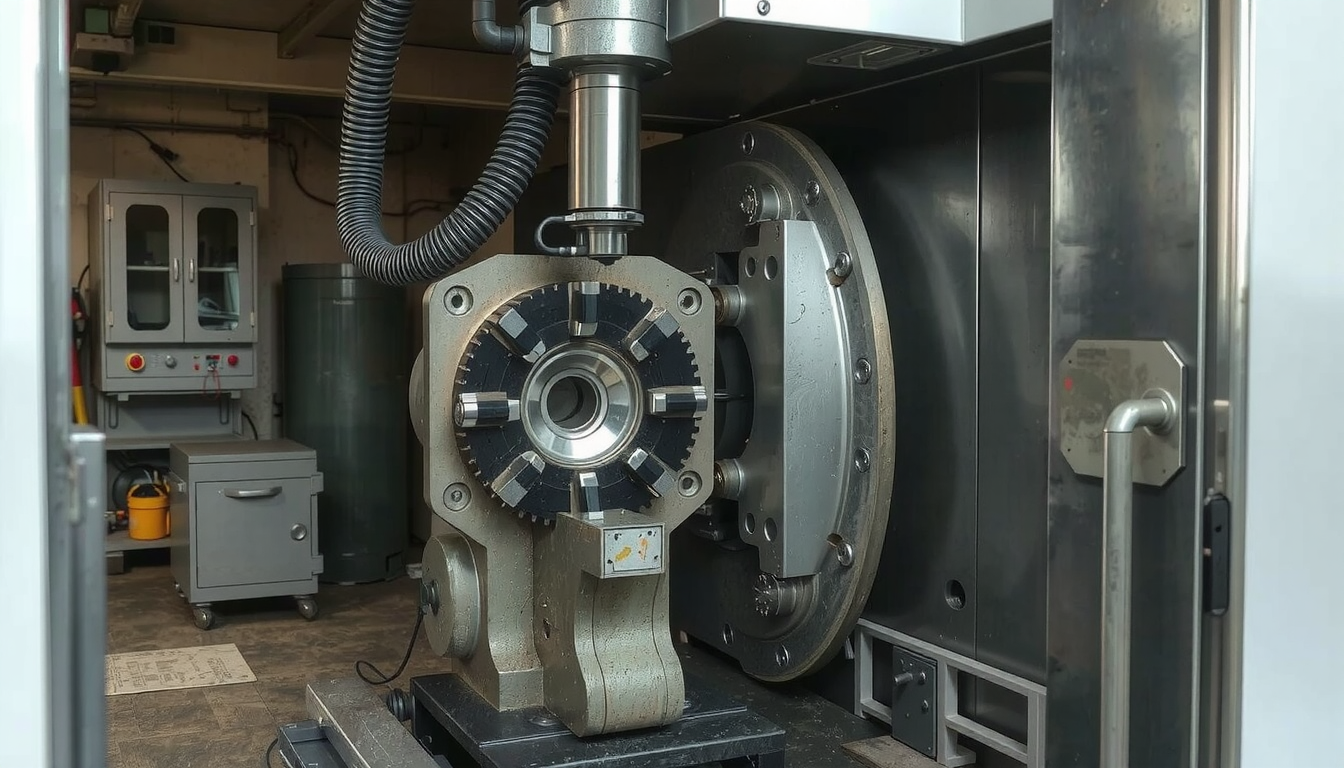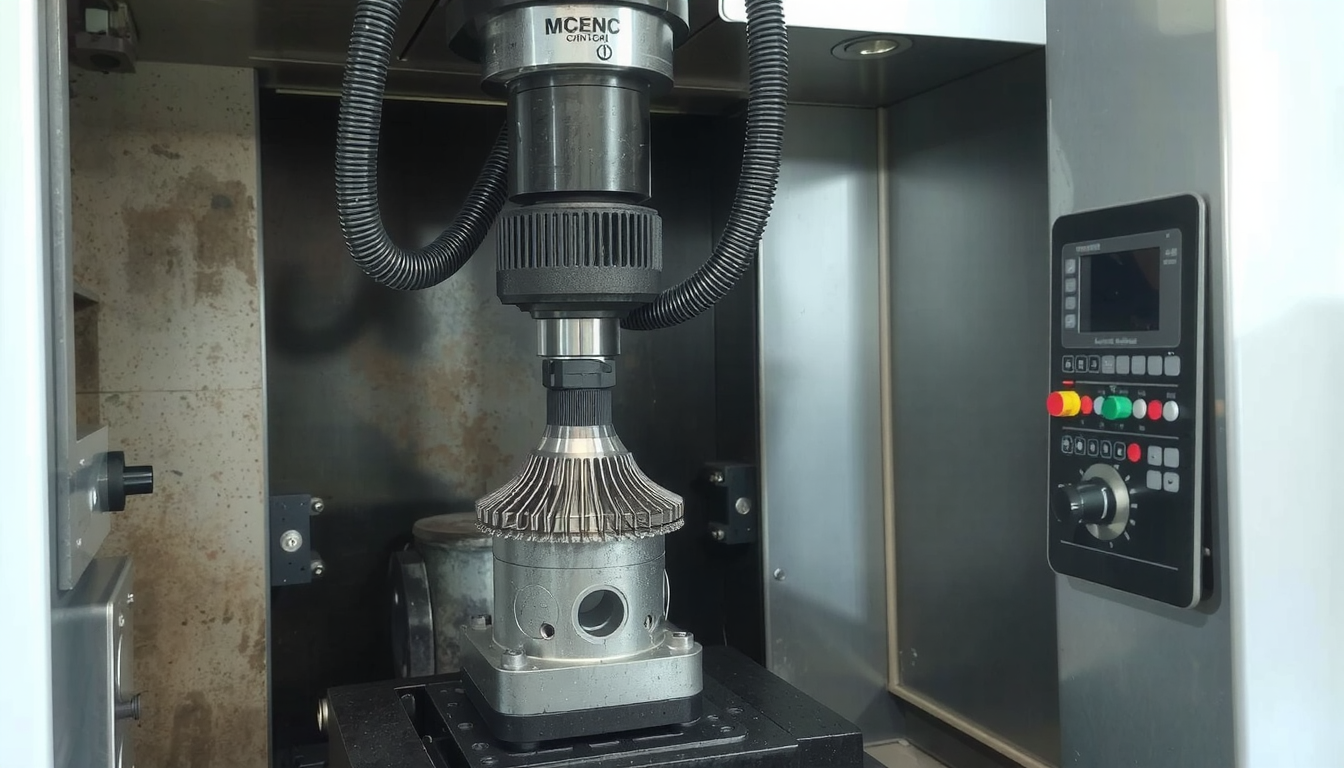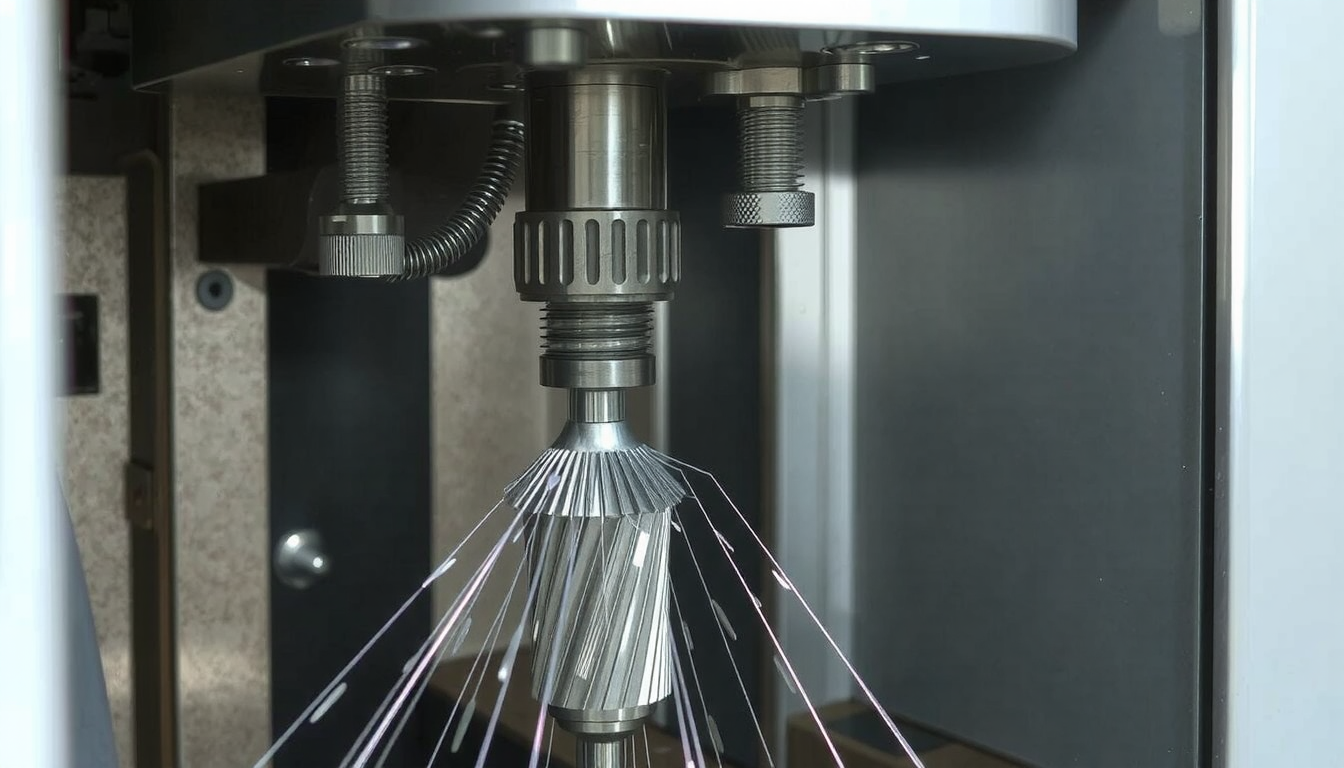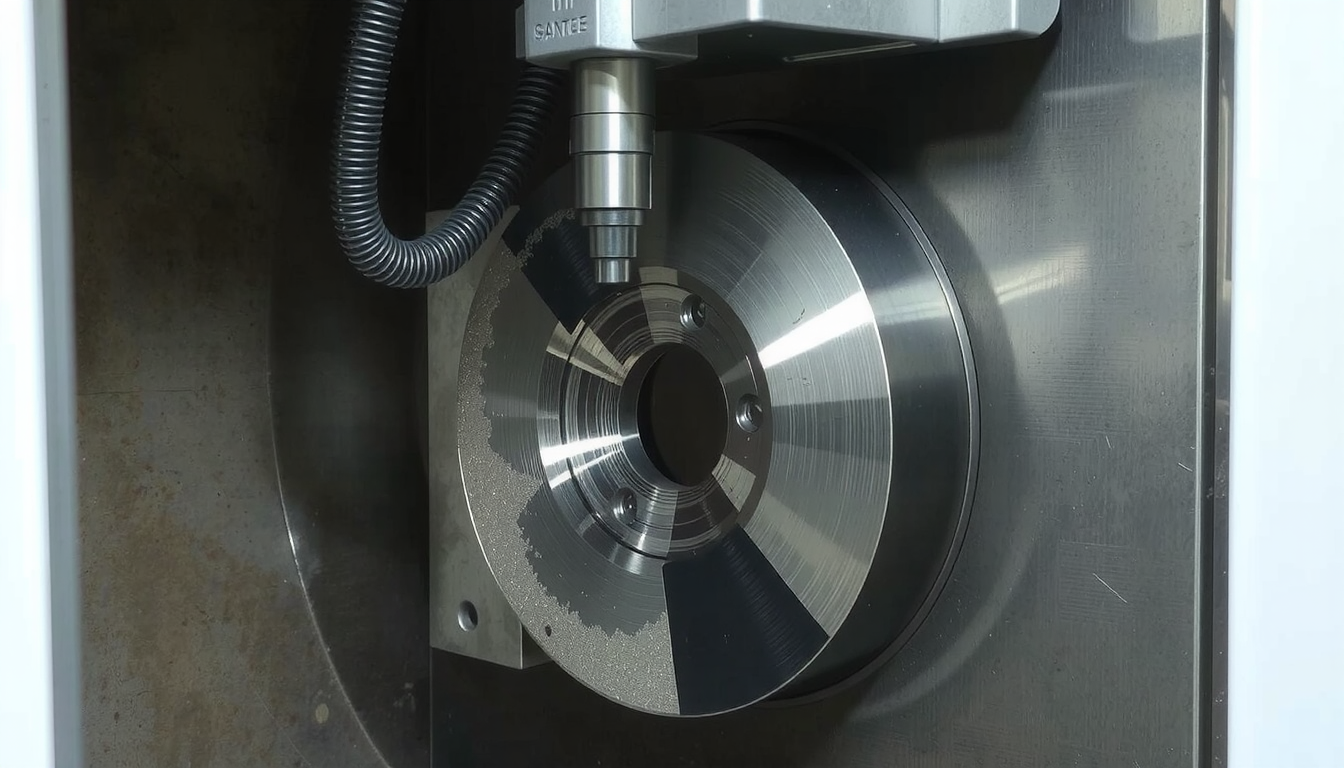Choosing the right way to produce parts is vital for the successful completion of your project. It has an effect on the quality of the parts, the expenditure incurred, and the lead time.

Both CNC milling and turning are effective methods of part manufacturing through the removal of material. They, however, perform better in different geometries.
This article will present a comparison of the two methods and what they entail. A simple choice-making diagram will be provided as well. The principal aim of this guide is to enable you to choose the correct cnc milling turning service based on your needs.
Getting Acquainted with the Basics: What is a CNC Milling and Turning Service?
You have to understand how each process operates to choose correctly. Both processes are computer-controlled and guided by cutting tools with a high degree of accuracy. The crucial difference is the movement of the part and the tool.
CNC Milling Service: High Precision by Rotating Tools
CNC milling uses a fast-rotating cutting tool to sculpt a workpiece out of a block. The workpiece is in a fixed position. The tool, which is spinning, moves along varying paths to shape it.
Think of it as sculpture out of stone. The tool is a cutting tool. The stone is your material.
This approach is suitable for parts with flat surfaces, complex shapes, pockets, or holes. Machines are available from basic 3-axis mills to higher-end 5-axis milling machines. These are capable of machining extremely complex shapes. A good service provider can work with a wide range of materials, both metal (aluminum and steel) and others like plastic.
CNC Turning Service: Forming Using a Rotating Workpiece

CNC turning operates the opposite way around. The workpiece is rotated rapidly, usually a round rod of material. A non-moving cutting tool shapes the component by removing material from the outside.
This is similar to a potter who is shaping clay on a wheel. The spinning clay is your workpiece. The potter’s hands are the cutting tool.
This process is excellent for parts that are round or that resemble a cone. Shafts, pins, bolts, and nozzles are among the common products. A dedicated Servicio de torneado CNC is often the best option for projects that demand high accuracy on circular components.
Head-to-Head: Key Differences Between CNC Milling and Turning
A side-by-side examination of the processes reveals the differences easily. The best option for your project will depend on the geometry and characteristics of the part. A professional cnc milling turning service would be the guide you need. However, the table below, is a great start.
| Característica | Fresado CNC | Torneado CNC |
|---|---|---|
| Workpiece Motion | Stays still | Spins at high speed |
| Tool Motion | Spins and moves in different directions | Moves in straight lines along the spinning part |
| Best for Shapes | Complex, non-round, flat surfaces, pockets | Round, cone-shaped, threaded parts |
| Typical Parts | Engine blocks, cases, molds, brackets | Shafts, pins, bolts, nozzles, pulleys |
| Initial Setup Cost | Can be higher due to complex holding | Usually lower for simple parts |
| Part Cost | Good value for complex, one-piece designs | Very cost-effective for round parts |
Choosing the Right Process: A Simple Decision Guide
Now that you know the basics, how do you actually choose? We use a simple question-based approach. This helps engineers and designers pick the most logical and cost-effective process.
Start with Your Part’s Basic Shape
Take a look at one question only, “Is the main shape of my part round?” in your part design.

If the answer is YES, then CNC turning is almost always your best starting point. The process is made for circular shapes. The very basic principle is to create round features.
If the answer is NO, and your part is more block-like, flat, or has odd shapes, then CNC milling is the right primary process. Milling works great for creating features on multiple flat or curved surfaces.
What About Complex Parts? The Rise of Mill-Turn and Multi-Axis Machining
Nowadays many parts are not purely round or purely blocky. They frequently contain both a round and a milled feature. For instance, a shaft with a flat face and mounting holes.
This is where the mill-turn centers come in. These are CNC machines that are a combination of a CNC lathe and CNC mill packaged together as one. They can perform both turning and milling operations in one setting instead of the part being moved to a different machine.
There are significant benefits. Firstly, the accuracy is enhanced because the part is not moved and re-clamped. Secondly, the lead time is reduced. The manufacturing of complex parts is less time-consuming and resource-efficient. The advanced machines are the go-to equipment for Complete CNC Machining Services. These are used in parts assembly for the aerospace and medical industries, which are known for their specific standards.
If you are searching for details with incredibly small parts located, you may wish to try more specialized options. For instance, Servicios suizos de torneado CNC allow for incredible precision to mass produce small, complex parts.
Design for Manufacturing (DFM): Pro Tips for Your CNC Project
Creating a part is just one aspect of the design stage. However, the second part is designing a part that can be manufactured efficiently and economically. This is known as Design for Manufacturing (DFM). Our specialists and machinists have some recommendations you should keep in mind, which will help you to save time and money during your next project.
DFM Tips for CNC Milling

- Incorporate Standard Corner Radii: The spinning tool cannot make a perfectly sharp internal corner. Always use the largest possible radius on all inside corners. This will allow using bigger and stronger tools. Thus, the time of machining will go down.
- Be Careful of Deep, Narrow Pockets: Deep and narrow pockets are susceptible to errors. The tool can vibrate. The clearing of chips becomes more complex. This leads to an increase in machine-time and the possibility of a tool break.
- Be Cautious in Designing Thin Walls: Very thin walls can suffer vibrations or distortion while machining. The rule of thumb is to ensure that walls are thick enough to support themselves.
- Keep Tolerances Realistic: Tolerances express the range in which the dimension can change. While achieving a tight tolerance is feasible, it requires longer periods and special care. This means that it adds to the cost. Only very tight tolerances should be specified on the exact features that need them.
DFM Tips for CNC Turning
- Limit Long and Lean Parts: An extremely long and weak part can bend or vibrate when being turned. This causes it hard to hold tight to the tolerances. If possible, try to keep the length-to-diameter ratio low.
- Use Standard Thread Sizes: Custom-threaded products require particular tools and extra programming time. Sticking to standard thread sizes (for example, UNC or UNF) will generally be faster and cheaper.
- Avoid Sharp Internal Corners: Similar to milling, turning tools have a nose radius. They are not able to create internal corners perfectly. Design features with a slight radius or an undercut feature to allow clearance for the tool.
Selecting the Right CNC Milling Turning Service Partner
The company that you will partner with is as essential as the design itself. You have to find a shop that is both reliable and capable. Precision and promptness in the completion of quality parts is a must. Here is a checklist that you can use to evaluate a potential cnc milling turning service provider.
- Capabilities & Equipment: Do they possess the necessary machines for your part? Inquire about their 3-axis, 5-axis, and mill-turn capabilities. Confirm that their equipment is able to cater for the complexity and size of your parts.
- Material Expertise: Validate that they can both source and machine the specified material. You may also inquire if they can supply material certifications. The certificates confirm the origin and properties of the material.
- Quality Control & Tolerances: What is their quality improvement system? Look for the shops that have accredited certifications such as ISO 9001. Ask about their standard machining tolerances. Usually, they are +/- 0.005″ (0.127mm). Ensure they can meet your part’s specifications for any tighter tolerances.
- Experience & Portfolio: Have they produced parts with similar requirements? Experience in your sector (medical, automotive, aerospace, etc,) is a major plus. They will have the grasp of the specific requirements that they need to deliver.
- Communication & Support: A good partner is not only reliable but also easy to cope up with. They should give clear, quick feedback on questions and be willing to provide DFM recommendations . This way, you can enhance your design and reduce costs.
Conclusion: Making the Right Choice for Your Project
The choice of cnc milling turning service is predetermined by the part’s shape. Use turning for round parts. Use milling for block-like parts. Complex hybrid parts should not be milled with one technology but using a mill-turn process.
Guidelines for good DFM practices and collaboration with an experienced machine shop are the two keys to a successful project. An experienced partner will assure that your parts will be completed as per the requirements, on time, and within budget.
Are you prepared to get your design going? Feel free to reach out to the pros at Mekalite and talk about your project and get a quote.
Frequently Asked Questions (FAQ) about CNC Milling and Turning Services
Q1: What is the main difference between CNC milling and turning?
A: The main difference is how the part and tool move. In CNC milling, the tool spins while the workpiece stays still. In CNC turning, the workpiece spins while the tool stays still. Thus, flat or odd shapes are best for milling. Whereas, turning is ideal for round shapes.
Q2: Can one service provide both milling and turning?
A: Certainly. A full-fledged cnc milling turning service can definitely do so. Many shops have distinct milling and turning machines. More advanced firms use “mill-turn” centers, which are hybrid machines that do both functions. These are especially suitable for parts that integrate both round and flat features.
Q3: What file formats are needed to get a quote for a CNC service?
A: The ideal files to the quote are those of 3D CAD models. The typical formats are STEP (.stp or .step) and IGES (.igs or .iges). It is also beneficial if you include a 2D PDF drawing. This must specify all dimensions, tolerances, materials, and any special notes clearly.
Q4: How does part quantity affect the choice between milling and turning?
A: The determination is based on the product’s shape and not its quantity. Both processes are very efficient at manufacturing any number of parts from one to thousands. However, generally, for all CNC processes, the cost per unit usually decreases as the quantity increases.
Q5: What are common materials used in CNC milling and turning services?
A: CNC machines are capable of cutting through a variety of materials. Common metals include Aluminum (like 6061), Stainless Steel (like 304 or 316), Carbon Steel, Brass, and Titanium. Many plastics are also used, such as ABS, Polycarbonate, Nylon, and Delrin.

